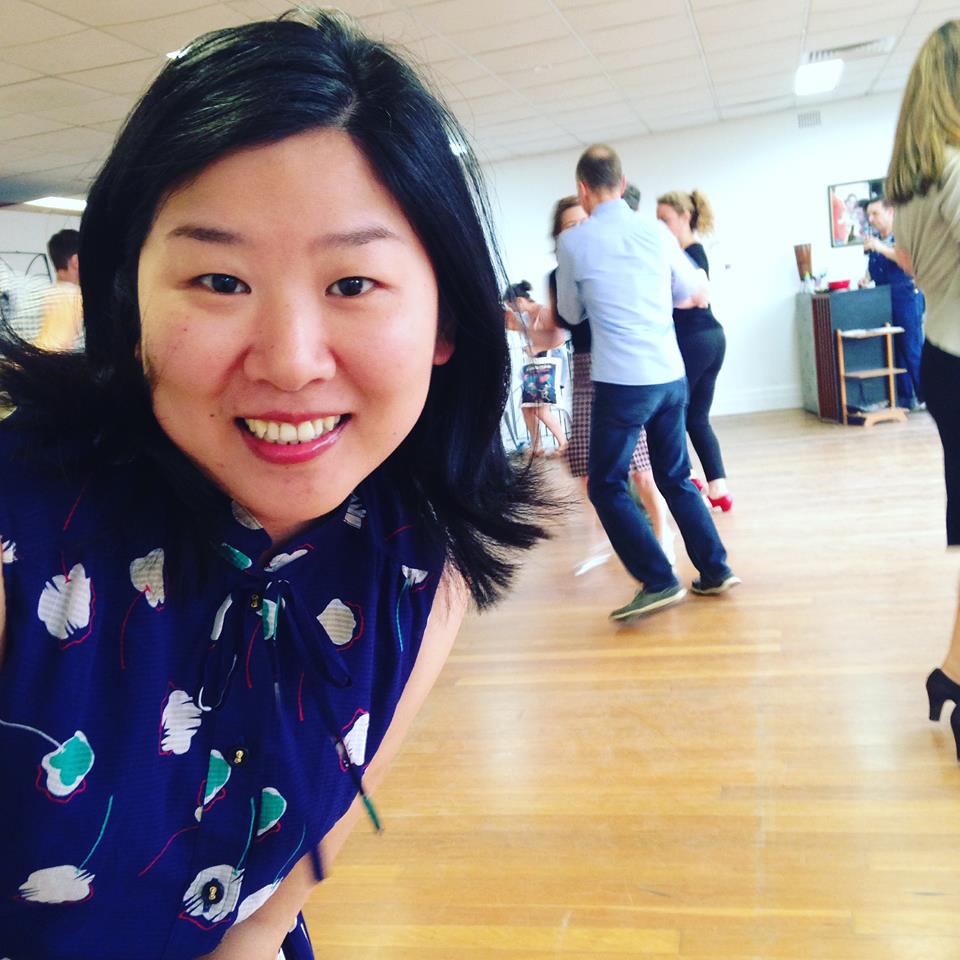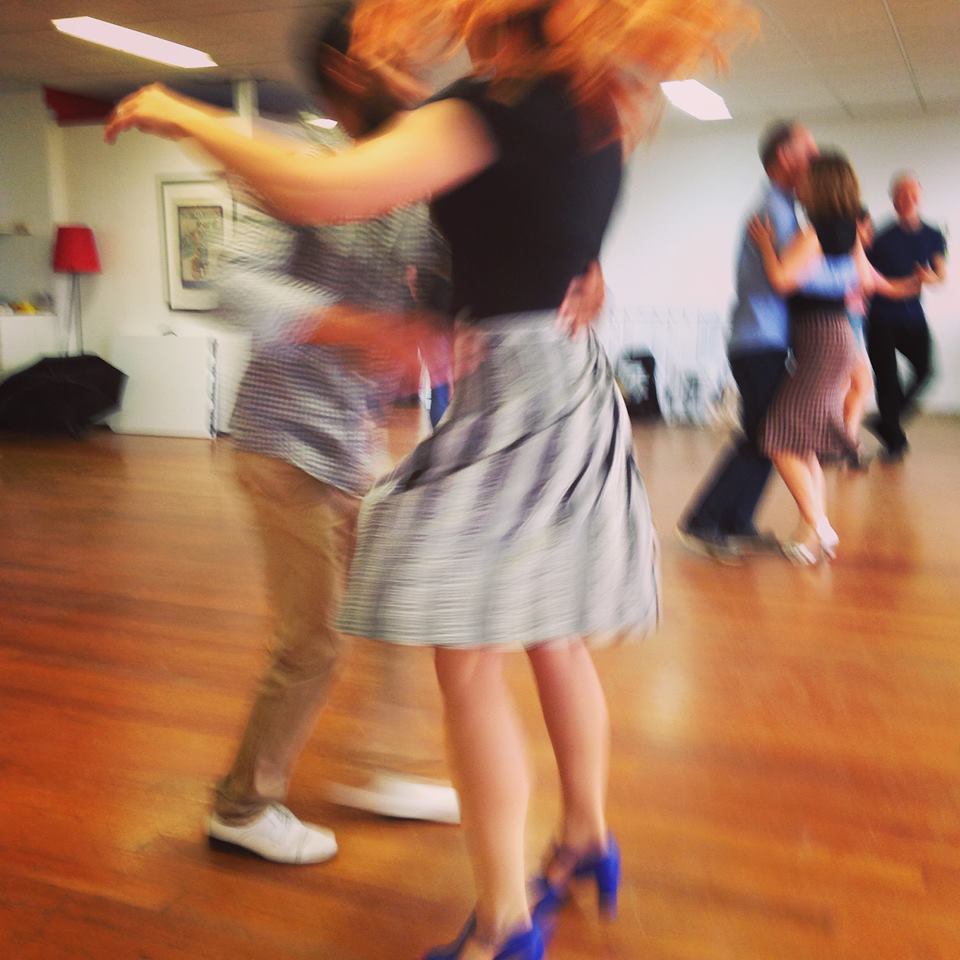Someone in our great teaching fb group just asked
do you have advice for gaining a reputation as an instructor outside of your local/regional scene?
Of course I had a long reply!
I can’t comment as a high profile teacher, but I can as an event organiser. I tend to seek out teachers who offer something unique, are great dancers, are nice people, and are great teachers. So comp-winning videos aren’t enough reason for me to book someone.
So I’m an example of a particular type of organiser with a particular brand and clear idea of what I want in teachers.
It helps to know the organiser types, and which ones you want to work with. eg experienced dancers from small friendly scenes; new organisers from small scenes; right on up to very experienced dancers and organisers running huge international events with huge teaching staffs.
So when I look for teachers, I look for:
– A clear set of terms (their pay rate for teaching, performing, competing), food and accommodation requirements, minimum hours, etc. And good PR photos. This stuff tells me they are professional and organised, and it makes my job SO much easier.
– Evidence that the teacher is working on their own teaching and dancing all the time, not just trotting out the same old classes in sixty different countries every year. I am not interested in a package deal; I want a teacher who is growing and developing. There are a couple of exceptions (people like Syliva Sykes for example could get away with this), but I’ve done workshops with the same teachers a couple of times in a year in different countries and had the exact same class taught in exactly the same way, despite the different crowd. It’s ok to have a type of class or to teach similar material, but each time they teach it should be adjusted to the class and event, and be a bit better. This is actually why I don’t just hunt down the A list teachers for my own learning or events; I don’t want a cookie cutter experience. I’ve been dancing too long for that.
– Personal anecdotes about learning from them, from people whose opinion I value (eg teachers I know who’ve taken classes from them).
– Personal anecdotes or recommendations about their personalities from people who’s opinion is valuable (eg from people who notice whether a teacher is kind and interacts as a real person, v a person who is a bit star-struck and thinks ‘dancing with everyone’ makes a teacher a nice person).
– Opinions or recommendations from other guest teachers (this is a good one – they can (subtly usually) let you know what person X is like to work with, or if they’re a very experienced person, they can point out a talent you might not have noticed)
-> be super careful on this, because no teacher wants to be known as a gossip. So don’t push for details. Just pay attention when they talk about events.
– Videos of comp performances, choreography, demos, etc that show me interesting dancing (ie they’re not just repeating what every joe is doing), the sort of dancing I value (and you know what that means), and some historical reference points.
– My own good experiences with that teacher in their class, or just interacting with them socially.
– My own observations of that teacher’s interactions with other people. eg I’ve seen a few big name teachers be total jerks at events when they’re not working, so even though they are ok when they are ‘on’ and working, I still won’t hire them.
– Teachers who talk to anyone and everyone, not just people who can get them stuff (ie not just other teachers, organisers, etc; they talk to all sorts of people). It’s ok for teachers to be shy or less gregarious, but I have no time for arse kissers or professional shmoozers.
– Teachers who offer the right material for my local scene at the right time. Not necessarily in terms of ‘the right teaching to get my scene better’, but more ‘the right vibe that will sell tickets and make people happy now’.
– Teachers who offer more than just classes. So I like teachers who are doing interesting research, are DJs, are musicians, like working with musicians, give good talks, etc etc. They don’t have to do these things at my event, but it does offer something more.
– The right interests and class content to suit my own projects. eg I was talking to a very high profile teacher about working at my event, but eventually chose not to work with them, not because they wouldn’t bring crowds (they so would), not because they were rubbish, but because their values and interests didn’t mesh with what I was doing. eg I look for teachers who want to try new things, work with musicians in interesting ways, and perhaps do unconventional class structures. This often doesn’t gel with the top name professional teachers who have a very set way of teaching and working at events (and that’s ok).
So I guess I’d recommend:
– Thinking about how you’d like to work as a teacher, out of the classroom. eg do you want huge events? Do you want to travel internationally? Do you want to travel to places like Asia v Europe? How much time do you want to spend traveling (eg coming to Australia takes at least a week of travel jet lag and work)? etc etc
– Be yourself, and work to your own values. Don’t try to be ‘fashionable’, unless you just want to get gigs quickly.
– Cultivate networks. And by that, I mean socialise like a real person, not in a fake shmoozy way. Don’t try to be super-social if you’re not; it’s ok to be shy or quieter. Just be a real person. Oh, and don’t be a dick. Be a nice person. You want to work with people you like and who share your values, not just with any old stooge. And go to the type of events you want to work at, or to the type of events that attract people you want to work with. So your crowd at ILHC isn’t like your crowd at Lindy Bout.
– Cultivate contacts. There are people in the scene who recommend teachers for gigs, are regularly consulted by organisers about teachers’ reps, and are generally very useful people. But they mightn’t be famous teachers or organisers or DJs. They could be that woman in her 60s who social dances, does classes, and doesn’t hobnob. But everyone seems to know her, and she’s been dancing for 20 years, and done every type of class or party under the sun. She’ll be the type of person who’ll know whether a teacher is a nice person or not, or have been privy to rumours about misconduct.
Think long term about this – you might meet them this year at LoneStar, but not see a gig come your way for two years. A good contact takes their time and doesn’t offer their recommendation lightly.
Things that put me off:
– Gendered language in classes, inappropriate behaviour, etc. You’d think it’d be obvious, but teachers who drink to excess, who hit on lots of people, who swear too much, who are disrespectful or sexist or racist or homophobic, who take advantage of organisers or other dancers, etc are shithouse.
– Aggressive self-promotion by teachers.
I’m regularly approached by teachers at events wanting to talk about coming to teach in Australia. I usually don’t mind if we are already friends or have some sort of rapport; it seems the logical extension of our relationship if we ‘click’ professionally. But I do get random teachers who approach me when I don’t even know them, trying to pressure me into booking them. It makes me supremely uncomfortable, and I’m pretty sure it’s a cultural thing. I often close the conversation with a vague comment about already having booked someone. And then I run away. So putting organisers on the spot is a bad idea. If I am interested in someone coming to my city, by the time I mention it to them in person, I’ve decided I WANT them.
– This is a culturally specific thing, but in Australia we are quite uncomfortable with ‘tall poppies’ who self-promote aggressively. It can be ok for an American to list all their accomplishments and send an email to other Americans soliciting a gig. But for many Australians this can seem too aggressive and arrogant.
As a heinous example, we often get single American men (usually blues teachers) approaching non-organisers with a ‘deal’ where they fly to Australia if the local person organises a gig.
This generally makes experienced organisers pretty uncomfortable, and it can exploit inexperienced people who don’t know how to say no, or feel flattered. These guys often arrive acting as though they’re literally a great white savour bringing dance to the colonies. When they really aren’t very great dancers and aren’t good teachers. They often do a bunch of gigs in the region, which tells me they don’t have any/many regular bookings, and have a wide open schedule with no local business or teaching commitments. All this stuff is mighty suspicious, and we often find out later they weren’t on the right visa, were sexually inappropriate, and did things like buy or use drugs inappropriately or illegally, borrowed money from dancers, or used dancers for their homes or resources.
I’ve noticed, working with Korean organisers, that there are cultural differences that are hard to discover until you’ve tripped over them. Even just working with translators requires a particular set of teaching skills and personality.
So research the dance and culture of new countries and scenes before you go there. And go to a scene to dance as a punter before you start trying to get gigs there.
-> so maybe talking about general dance stuff with organisers, casually saying that you like the sound of scene X in their city, and are interested in traveling more is ok.



